Hey. From the very beginning of the appearance of fingerprint scanners in smartphones, I was interested in how they work. Yes, it is not difficult to find on the network a description of the principle of operation of different types of scanners, and their detailed technical characteristics, but you must agree, reading about this is not the same as disassembling and seeing. Therefore, let's not beat around the bush – we disassemble. In the process of writing this material, the thought came to me that the article can be called not 'Notes of a Master', but 'Notes of a Vandal', since both objects under study were completely destroyed in the process of study (this was originally intended, but still). ?
The test subjects will be a fingerprint scanner from Apple iPhone 6 and a fingerprint scanner from Samsung Galaxy S7 Edge.
There is no point in describing the appearance, since everyone has known it for a long time, so just a comparison in the photo.
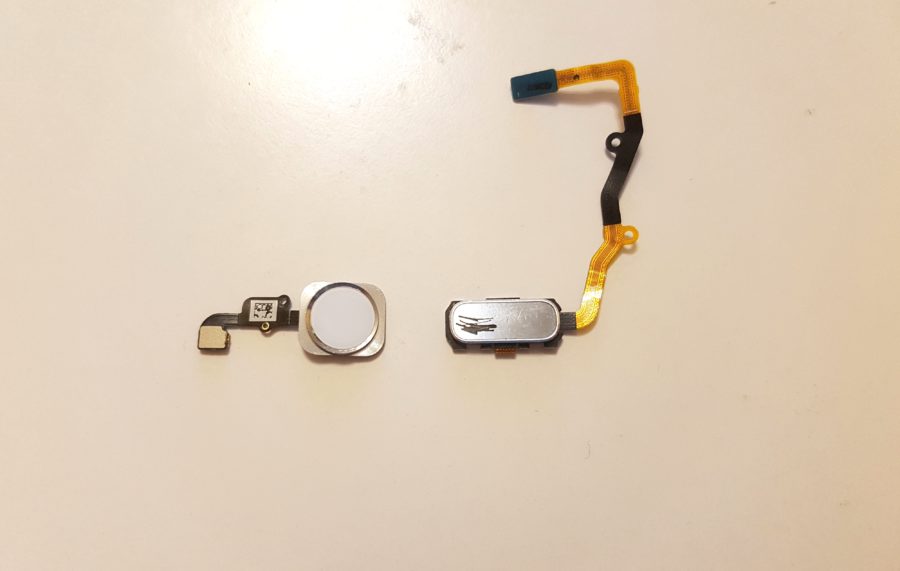

By design, apart from the shape, at first glance, there are no obvious differences.
To begin with, we check the claims that the Samsung button is easily scratched.
I checked this fact earlier, and the statement was confirmed – the button is very easy to scratch. This is not good.
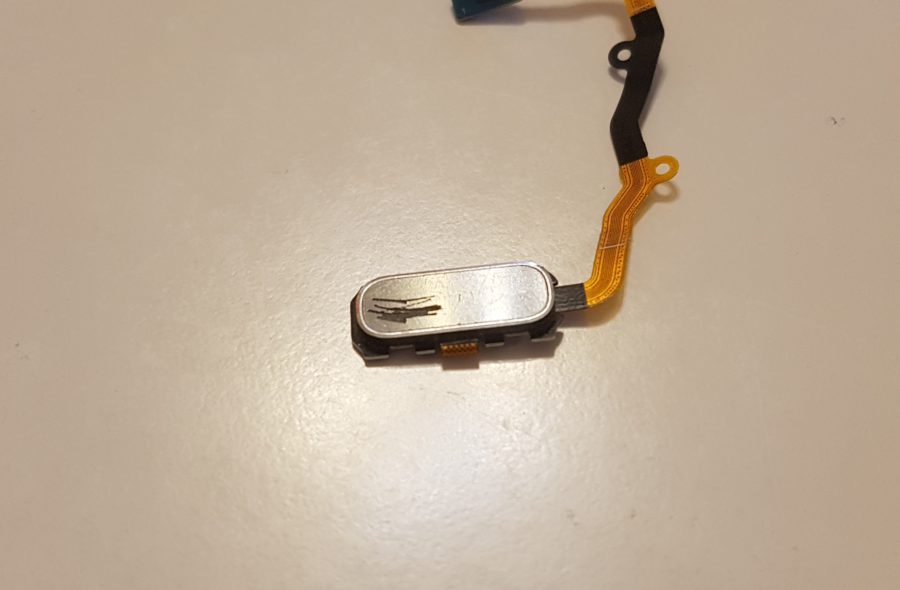
We try to scratch the button iPhone – this also turns out to be very simple. Strange, as far as I remember, the sapphire should cover the scanner. But here is a banal, easily scratched plastic, although the button is removed from the original phone (the button is very similar to the unoriginal one, although the Touch ID worked with it, strange).
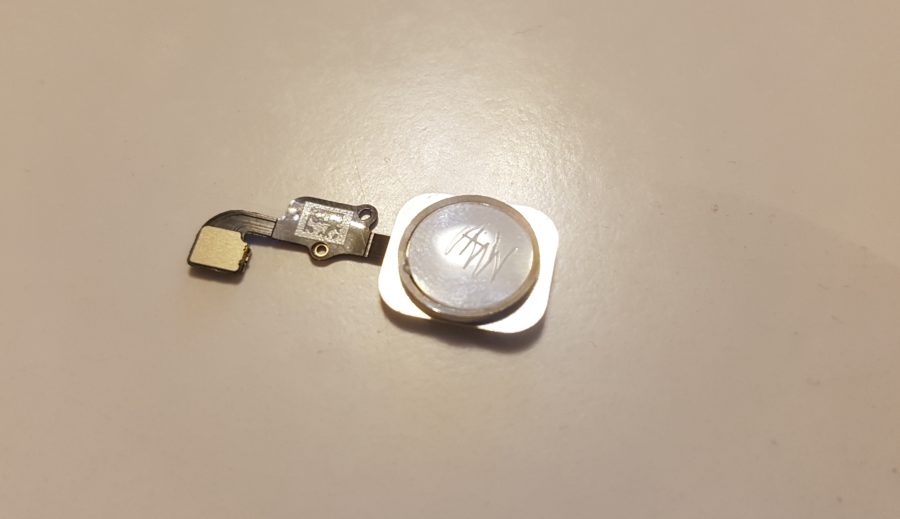
However, due to the fact that the button is painted on the inside, even deep scratches are visible only from a certain angle. Looking at the button iPhone, one wonders what Samsung was thinking, making such an unreliable coverage on their smartphones' scanners.
Touch ID
Let's start with the scanner iPhone. We disassemble the button, throwing back the loop with the clicker and the lid, and look inside.
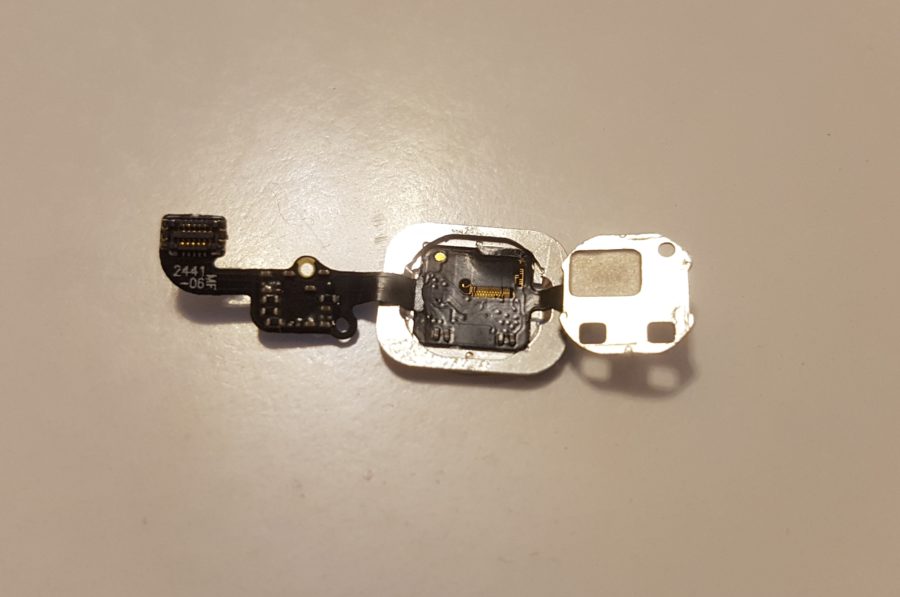
I expected to see a complex construction of a large number of elements, but in reality it was just a black surface with a small window in which the golden contacts are visible.

And that's all … Sparsely. We continue to disassemble, peel off from the lid to see what is inside.
Maybe all the elements are there? But no. On the other side, the same thing awaits us. Hmm, sparsely.

Well, you need to see it through to the end. Trying to peel off the black insulating coating. Under this coating, the same conductive stubs are found, which, apparently, act as a signal generator.
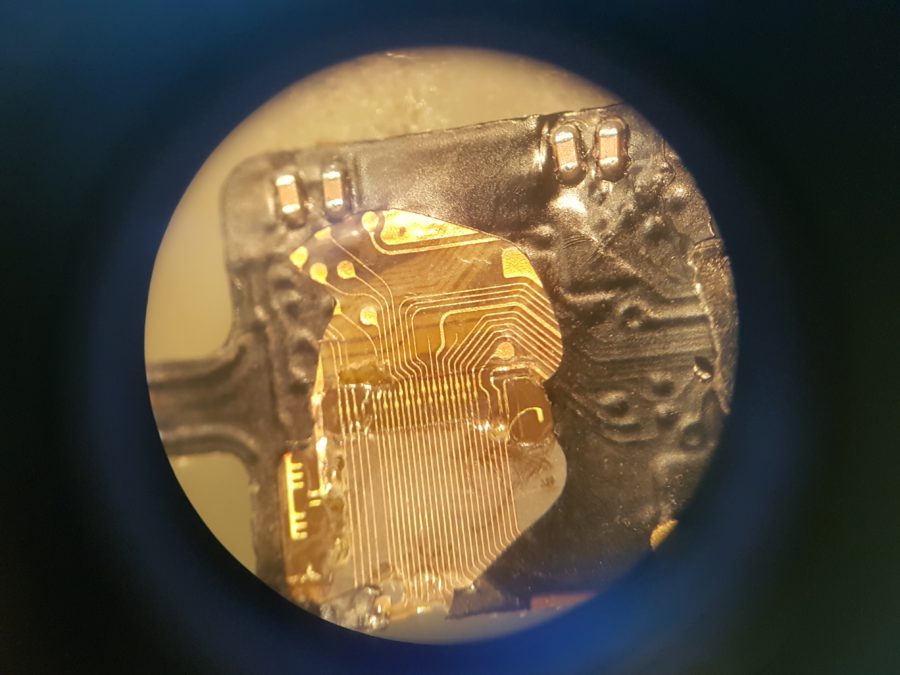
On the reverse side – also no surprises. Everything is very, very simple, even a little boring.
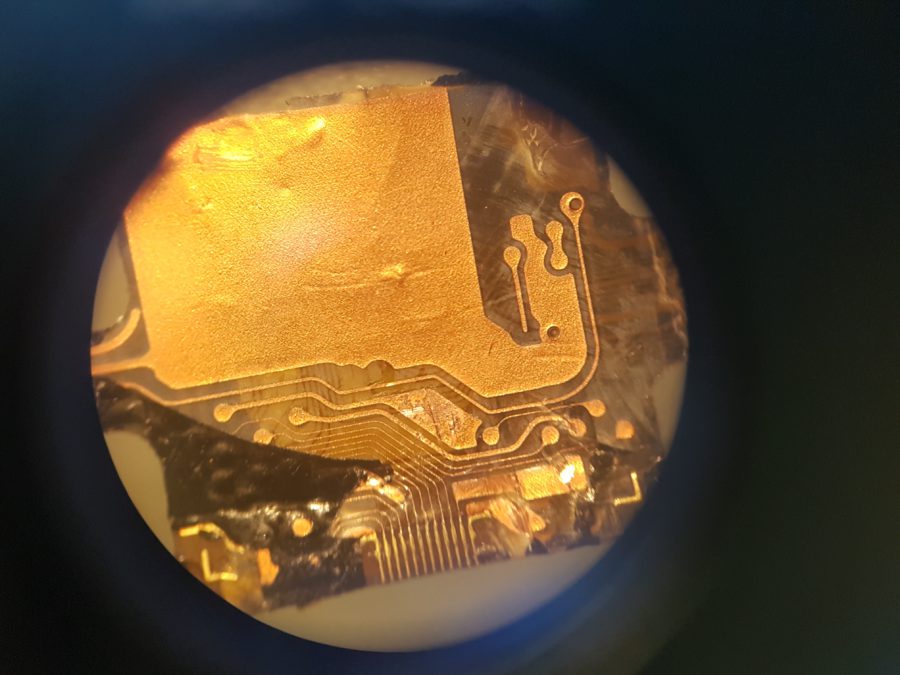
Perhaps this is the very case when it would be appropriate to say that all ingenious is simple.
Samsung
Now we disassemble the Samsung scanner. We follow the same path, peeling off the plume with a clicker from the metal frame to get to the insides.
Everything is assembled here much stronger and more monolithic and it is much more difficult to understand (like Samsung phones in comparison with Apple).
Unstick it from the frame and see an unusual ribbed texture, and the flaky structure, when viewed from the end, most of all resembles plywood.
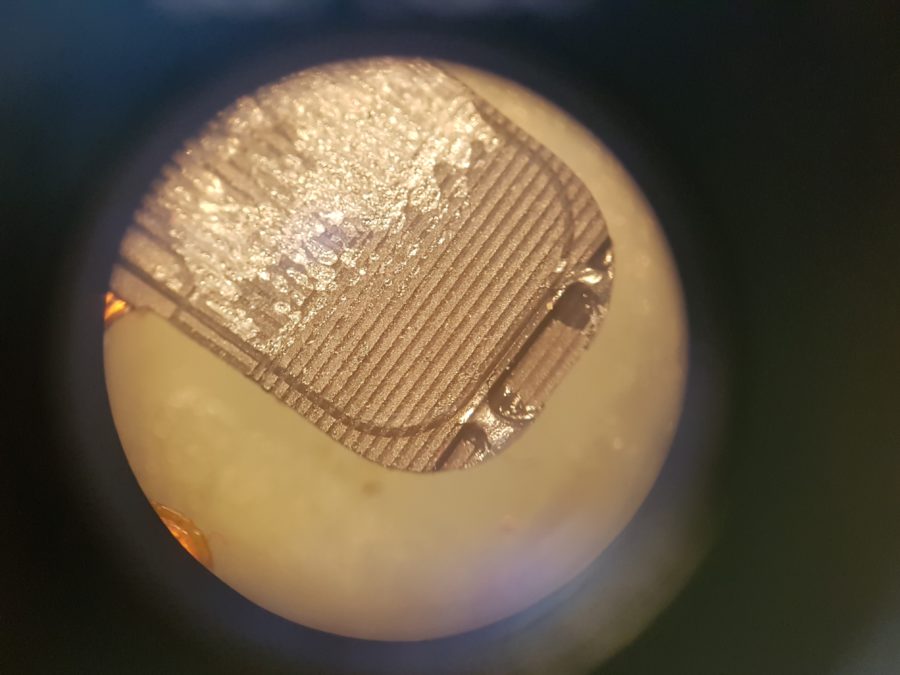

But since there are layers, then there is something between them.
Now we are trying to get to the electronics, for which we are trying to open the scanner platform itself.
It turns out this only after applying a fair amount of effort. Upon closer inspection, it becomes clear that the case did not open, but broke, and the structure inside most of all resembles Kevlar fiber.
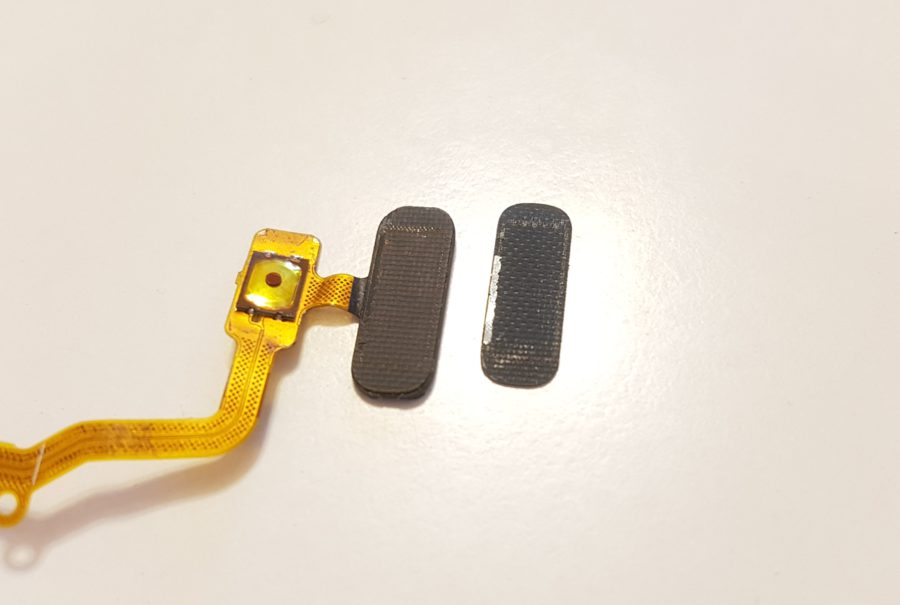
If you look closely, you can see contacts that run along the entire perimeter, from the inside to the outside, through the entire thickness of the scanner body.
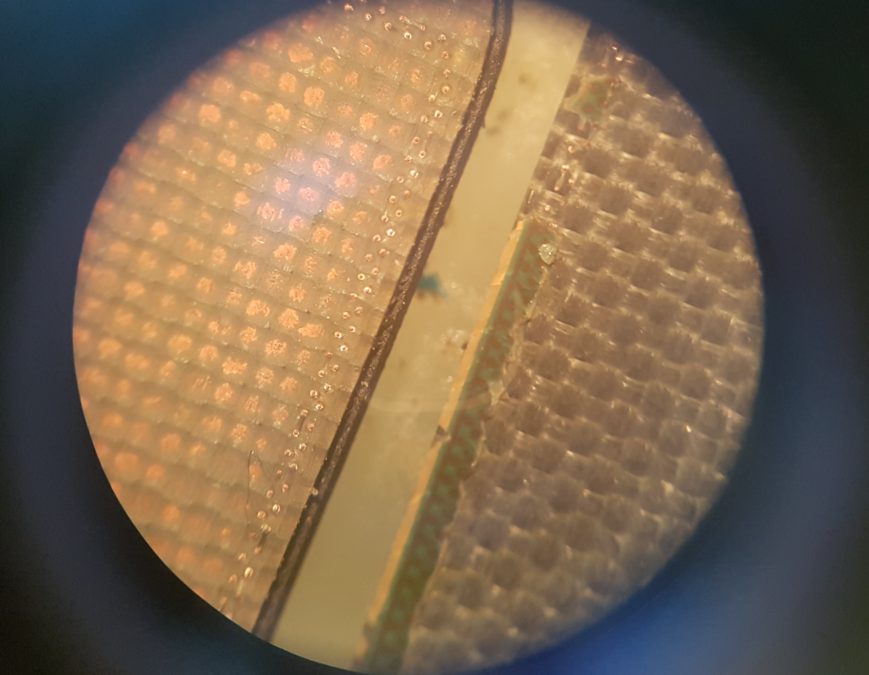
We continue to improve our vandalism and remove the shell to get to the trains.
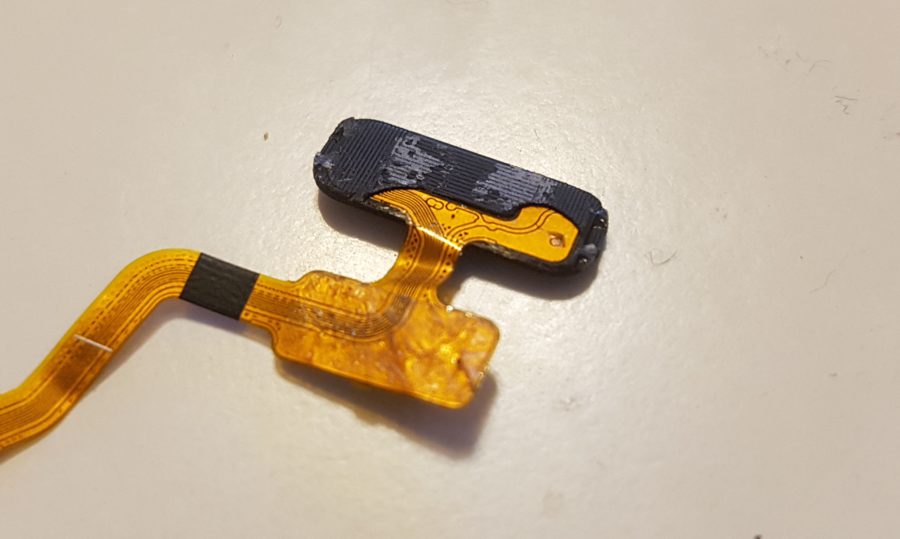 At some point, there is a feeling that now, just a little bit more, but with the next press, the scanner simply breaks to pieces.
At some point, there is a feeling that now, just a little bit more, but with the next press, the scanner simply breaks to pieces.
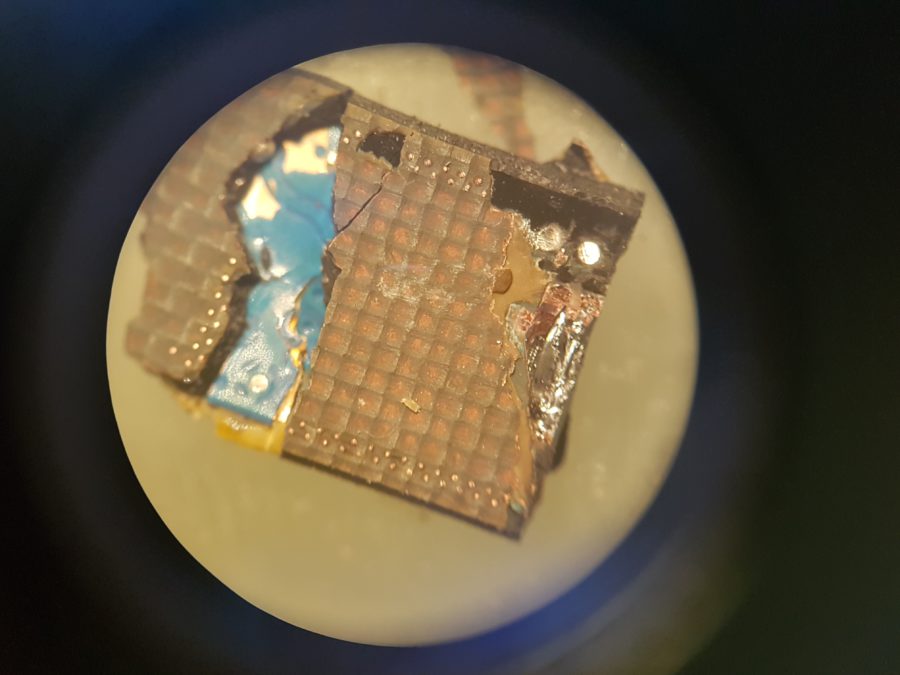
Apparently, no one at Samsung imagined that I would disassemble this essentially monolithic construction. Eh, Koreans, a flaw …
But something interesting can be seen on the scrap.
You can see the board, from which contacts in the form of tin balls go through the thickness of the material to the external radiator, and the so-called 'glass' is located on the radiator from the inside, which, apparently, serves as a signal filter from the antenna.

Alas, it is not possible to consider everything in more detail due to the solidity of the structure and the rigidity of the material of the scanner body.
The Samsung scanner has a very complex, multi-level design. Probably also quite expensive to manufacture. Only now it is not clear why it was necessary to fence this whole vegetable garden? And all right, the result would be from all these efforts, but no, the elementary design of the scanner iPhone actually turns out to be faster and more accurate.
Instead of a conclusion
In fact, all the information about how fingerprint scanners work in different smartphones can be found in the documentation for these same scanners. In addition, descriptions of technologies used in such scanners are also freely available on the network. But it is one thing to read the theory, even with schematic images, and quite another thing when you have the opportunity to touch everything with your own hands, looking inside the device, even in such a vandal way. Write in the comments, what else would you like to know from a similar point of view, or, more simply, what else would I disassemble into its component parts?
